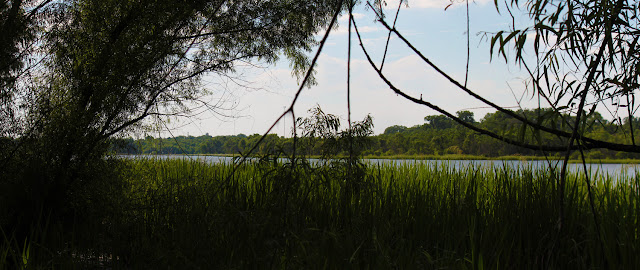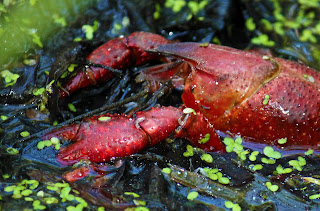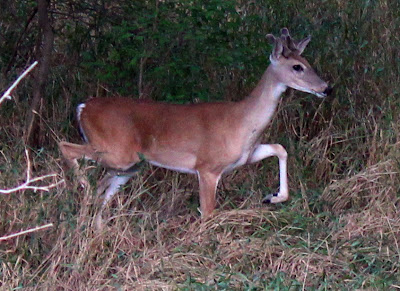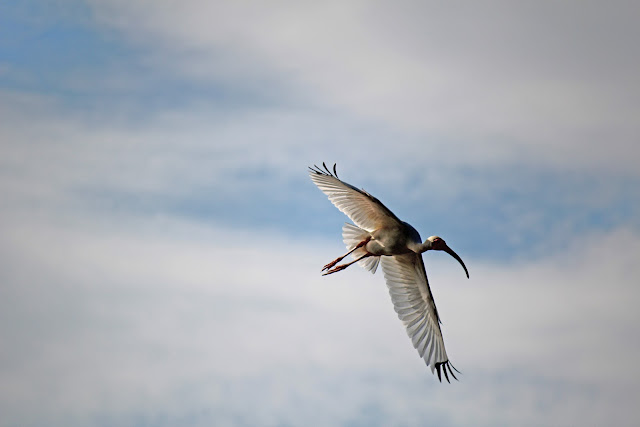Airboating for alligator gar, a deer sighting and tropical birds at Joppa Preserve
The guy above is at the Loop 12 Boat Ramp after what he described as a “near fatal encounter” with the McCommas Bluff Lock and Dam on the evening of May 27, 2012. He was alligator gar hunting on this stretch of the Trinity River for the first time and was not aware that the McCommas Lock and Dam straddled the river below McCommas Bluff. He said that it was “1 in 1000” that he survived after getting hung up in the riffles, shoal, logs and concrete blocking the river there. He was pretty angry about it and shaking his head as he secured his airboat.
Signage exists at the Loop 12 Boat Ramp detailing the hazards of the boat ramp ahead but there are not any warnings about the navigable hazards up and down the river. That would include not only the 104 year old McCommas Bluff Lock but the brand new Standing Wave near Downtown. The alligator gar hunter seemed to be an experienced boater, mentioning he does most of his boating below Texoma on the Red River in water an inch deep. He suggested the city, county or Parks and Wildlife should install a sign at the boat ramp of those hazards.
Whitetail Buck At Loop 12
 |
| Whitetail Buck at Little Lemmon Lake, Great Trinity Forest Trail |
Deer are so hard to see this time of year in the Great Trinity Forest. Most of the foliage is at a peak and sometimes seeing just 10 feet into the underbrush is difficult. The single whitetail in the photos above and below were taken just 3 minutes after I spoke with the airboater and not more than 200 yards away. The location is a small bridge that spans a canal separating Little Lemmon Lake from Lemmon Lake. At some point in the distant past I think this was the original channel for Five Mile Creek.
 |
| Deer with a dumped tire, only in the Great Trinity Forest |
It’s usually during the rut that bucks move around during the day coming closer to humans. So this particular deer out wandering around is something special for this time of year. It seemed to slowly drift off the concrete and back into the woods at a leisurely pace. Which was neat. Whitetail bucks lose their antlers in the winter and start to grow them back in April-May. The buck you see here has about a month of velvet growth so far and might have a decent sized rack of antlers come fall.
I checked with the DFW Urban Wildlife guy to see if this deer matches any of the deer in his automated photo collection and it does not.
The rebirth of Lemmon Lake and the return of the Roseate Spoonbills
 |
| Lemmon Lake May 27, 2012 |
 |
| Roseate Spoonbill May 27, 2012 at Lemmon Lake |
I had written off Lemmon Lake as the victim of the 2011 drought. Baked to a crisp last summer the soil was literally sterilized of aquatic life by the heat. I thought that while the water would surely return the food chain of smaller insects and amphibians would take years to rebound. I was wrong. The bait fish, crawfish and frog populations are back full force. So are the birds from down south that feed on them.
Getting to a view of Lemmon Lake is difficult. Surrounded by thickets, bramble patches, poison ivy…and that’s just the outer belt. Next comes a section of willow swamp, followed by a slog through snake infested 8 foot high reeds. The trail I whacked out of the undergrowth last year so that birders could visit has now become overgrown again to the point where one cannot even see it. I chose a different bushwhacking route this spring and was rewarded with seeing an early set of Roseate Spoonbills. Hopefully, this is a sign of things to come for June and July with more strange birds of the tropics moving north for the summer.
Video of Lemmon Lake and a roosting Roseate Spoonbill in a willow tree with some Anhingas
White Ibis at Lemmon Lake
These feeding frenzys are interesting to watch. The Ibis organize into police lines, driving forward like a tractor plowing a field. The cranes, herons and egrets follow along either picking through the scraps or staying ahead of the ibis as they drive the larger fish forward. The larger shad as seen inset left are too large for the ibis and are readily picked up by the larger birds.
Where did all the mosquitoes go?
 |
| Southern Leopard Frog at Lemmon Lake |
 |
| Red Swamp Crawfish at Lemmon Lake |
I was last at Lemmon Lake in early May. It was a quick visit due to the clouds of mosquitoes in the brush. Within a minute of stepping off the concrete I was swarmed by the insects. My most recent trip…not a mosquito to be seen. I think the unusually large population of Southern Leopard Frogs might have something to do with that. The flooded timber of the winter and spring gave the tadpoles an excellent environment for brooding. This variety of frog is a swiss army knife of insect killing eating spiders, grasshoppers, flies and mosquitoes. Having these underfoot sure makes a trip more enjoyable.
It’s interesting that all these photos were taken within 1/2 a mile of each other over about the course of an hour. The diversity of what exists down in that part of the Great Trinity Forest is just eye popping. The scenes of a guy with an airboat, deer, spoonbills, ibis and symphony of frogs are more out of a Florida swamp. Not a forgotten part of Dallas.








